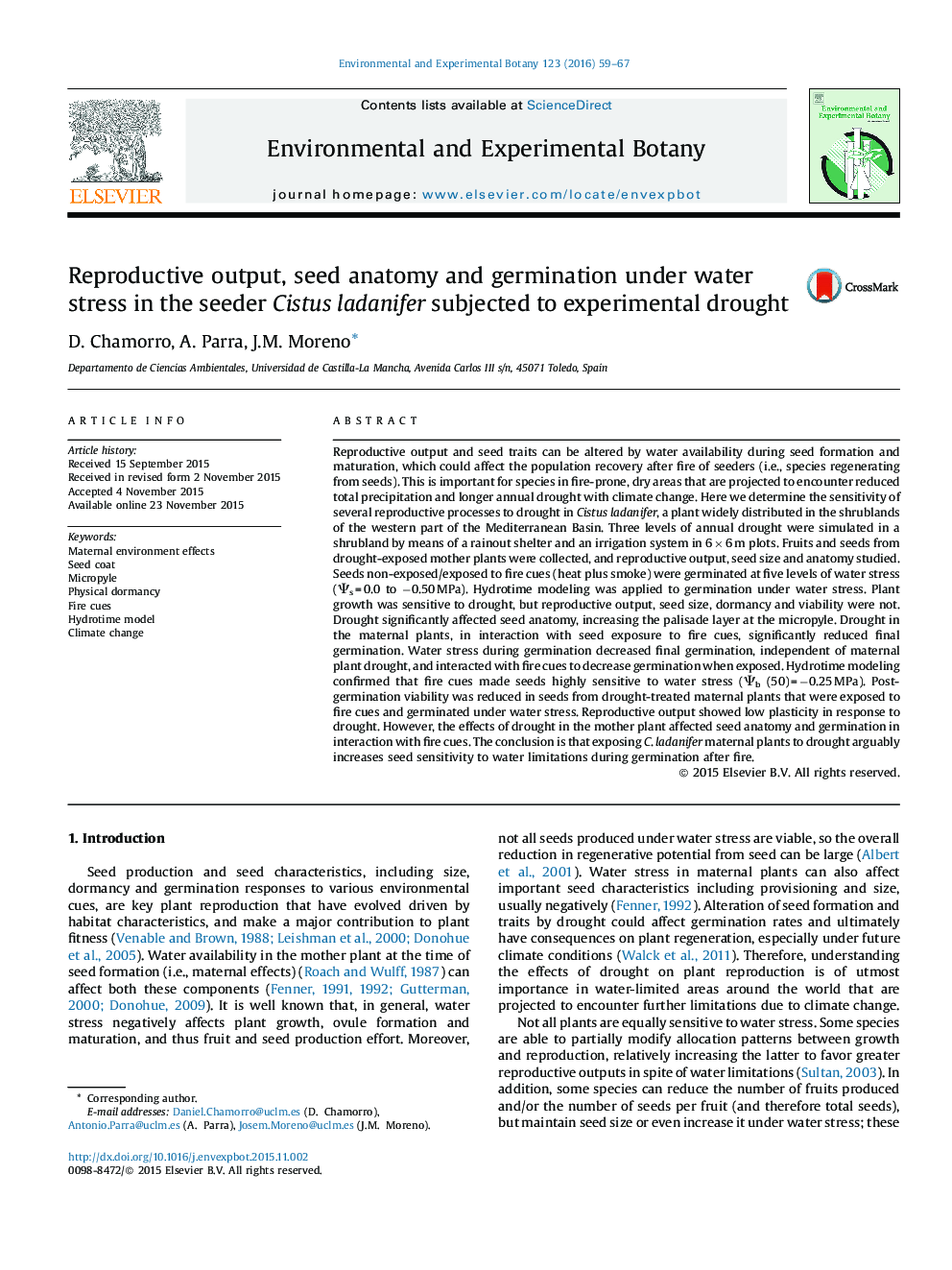| Article ID | Journal | Published Year | Pages | File Type |
|---|---|---|---|---|
| 4554135 | Environmental and Experimental Botany | 2016 | 9 Pages |
•Reproductive output of Cistus ladanifer showed low plasticity to drought.•Severe drought affected seed anatomy by increasing the palisade layer at the micropyle.•Water stress during germination reduced final germination in fire cues treated seeds.•Drought negatively affected final germination in seeds exposed to fire cues.
Reproductive output and seed traits can be altered by water availability during seed formation and maturation, which could affect the population recovery after fire of seeders (i.e., species regenerating from seeds). This is important for species in fire-prone, dry areas that are projected to encounter reduced total precipitation and longer annual drought with climate change. Here we determine the sensitivity of several reproductive processes to drought in Cistus ladanifer, a plant widely distributed in the shrublands of the western part of the Mediterranean Basin. Three levels of annual drought were simulated in a shrubland by means of a rainout shelter and an irrigation system in 6 × 6 m plots. Fruits and seeds from drought-exposed mother plants were collected, and reproductive output, seed size and anatomy studied. Seeds non-exposed/exposed to fire cues (heat plus smoke) were germinated at five levels of water stress (Ψs = 0.0 to −0.50 MPa). Hydrotime modeling was applied to germination under water stress. Plant growth was sensitive to drought, but reproductive output, seed size, dormancy and viability were not. Drought significantly affected seed anatomy, increasing the palisade layer at the micropyle. Drought in the maternal plants, in interaction with seed exposure to fire cues, significantly reduced final germination. Water stress during germination decreased final germination, independent of maternal plant drought, and interacted with fire cues to decrease germination when exposed. Hydrotime modeling confirmed that fire cues made seeds highly sensitive to water stress (Ψb (50) = −0.25 MPa). Post-germination viability was reduced in seeds from drought-treated maternal plants that were exposed to fire cues and germinated under water stress. Reproductive output showed low plasticity in response to drought. However, the effects of drought in the mother plant affected seed anatomy and germination in interaction with fire cues. The conclusion is that exposing C. ladanifer maternal plants to drought arguably increases seed sensitivity to water limitations during germination after fire.
